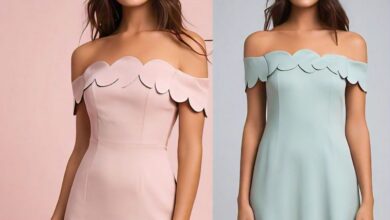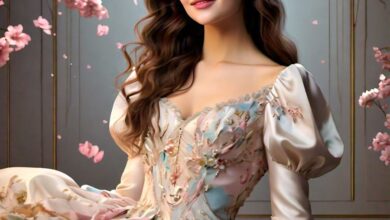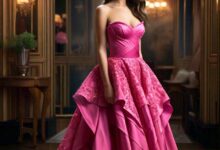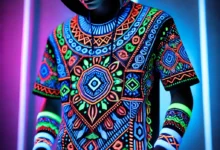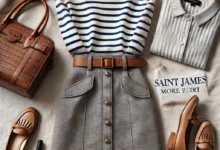The Classic Charm of Spanish Newsboy Fashion 50s

In the post-war years, the world of fashion underwent drastic changes, with each region developing its own distinct interpretations based on political, cultural, and economic factors. In Spain, during the 1950s, newsboy fashion emerged as one of the most iconic trends among working-class youth, particularly in urban settings. This style was marked by practicality, simplicity, and a sense of youthful rebellion that combined the needs of the everyday working person with an emerging sense of identity. The “Spanish newsboy fashion 50s” became synonymous with a sense of resilience and practicality, showcasing the working-class ethos of the time.
In this article, we will explore the evolution, key components, cultural context, and lasting impact of Spanish newsboy fashion from the 1950s. We will also delve into how the political climate of Francoist Spain influenced this iconic street style. By examining its key features, such as the classic flat cap, loose-fitting trousers, and button-up shirts, we will better understand how this look continues to resonate in contemporary fashion today.
Key Elements of Spanish Newsboy Fashion in the 1950s
The 1950s saw a distinctive shift in fashion for Spanish youth, especially those belonging to the working class. In this context, “Spanish newsboy fashion 50s” was about more than just clothes—it was a manifestation of a lifestyle that combined hard work, resilience, and a sense of belonging to a specific social class. Here are the main elements that defined this iconic look:
Read Also: The Evolution of French Fashion Monogram Since 1962: A Legacy of Luxury and Exclusivity
1. Flat Caps: The Symbol of Youthful Independence
Perhaps the most recognizable element of the Spanish newsboy fashion 50s was the flat cap. This headwear, also known as a “newsboy cap” or “baker boy hat,” was ubiquitous during the era. Made from fabrics such as tweed, wool, and cotton, these caps had a rounded crown and a small brim that tilted to one side, giving the wearer a slightly rebellious yet practical appearance.
In Spain, the flat cap had a cultural significance that transcended mere fashion. It was associated with a youth that worked in the streets, either selling newspapers or working menial jobs, and was often worn by children and young adults. The “Spanish newsboy fashion 50s” used the cap not just as a functional item but also as a symbol of working-class identity. It was a statement of belonging to the hustle and bustle of urban life in cities like Madrid and Barcelona, where young boys used their cap as a sign of their role in the daily grind.
2. Loose-Fitting Trousers: Comfort and Functionality
Another defining feature of the Spanish newsboy fashion 50s was the loose-fitting trousers. These high-waisted pants were typically cuffed at the ankle, providing freedom of movement—an essential quality for street vendors and newsboys who spent most of their time on their feet. The trousers were often made of durable fabrics like wool or cotton, which could withstand the wear and tear of everyday use.
The loose-fitting nature of the trousers also played a significant role in the social identity of the youth who wore them. The practicality of the trousers was a reflection of the working-class roots of the look. They weren’t about formality or fashion for the sake of style but were a testament to the lives led by the youth of the era. These pants often came in neutral colors such as grey, brown, and black, reinforcing the sense of modesty and simplicity associated with the “Spanish newsboy fashion 50s.”
3. Button-Up Shirts: Simplicity with a Touch of Style
Underneath the vests or sweaters, newsboys typically wore simple button-up shirts. These shirts were often made of cotton or linen and came in patterns such as plaid or stripes, which were commonly worn by the youth in the Spanish 1950s. The design was usually functional—no excess frills or embellishments, just a basic piece of clothing that could be easily worn in all weather conditions.
In addition to their simplicity, these shirts were often loose and comfortable, making them ideal for long days spent in the streets, carrying newspapers or other goods. The “Spanish newsboy fashion 50s” emphasized practicality, and the button-up shirt was another piece in the puzzle of youthful rebellion combined with working-class functionality. They were often worn untucked, giving the outfit a relaxed, carefree appearance, yet still adhering to the modest style expected of the time.
4. Vests and Sweaters: Layering for Practicality and Style
Over the button-up shirts, many boys added layers for warmth, especially during the colder months. Woolen vests and knitted sweaters became popular among those wearing Spanish newsboy fashion 50s, offering a way to stay warm while still adhering to the practical and modest aesthetic of the time.
The layering of vests and sweaters also played into the notion of youth independence. The use of these practical items of clothing reflected the need for comfort and warmth while maintaining a certain level of modesty. Woolen vests were often thick and bulky, made for long-lasting durability, and served the dual purpose of style and warmth. In the world of Spanish newsboy fashion 50s, these layers became a way to keep the wearer protected against the elements while maintaining the rugged, working-class image.
5. Tailored Jackets: Casual Yet Formal
For more formal occasions, a tailored jacket or blazer was a common addition to the newsboy look. These jackets were typically made from wool or tweed and often featured a more structured silhouette with broad shoulders. Although the newsboy look was rooted in working-class street style, there was also a clear sense of formality in the outerwear worn by young boys.
The tailored jacket provided warmth and structure while maintaining the practicality that was central to the “Spanish newsboy fashion 50s.” The jacket could be worn over the button-up shirt and vest to create a more polished look, suitable for occasions such as attending school or running errands in the city. The simplicity of these jackets, however, still kept the overall aesthetic of newsboy fashion grounded in practicality and functionality.
6. Sturdy Footwear: Built for the Streets
Footwear played a significant role in the Spanish newsboy fashion 50s. Newsboys and young workers typically wore sturdy leather boots or lace-up shoes, which were necessary for walking long distances, carrying heavy loads, or navigating through the bustling streets of urban Spain.
The shoes were often made of durable leather, ensuring they could withstand the rough conditions of street life. Brown and black leather were common color choices, offering versatility and durability. Unlike the more refined and delicate footwear seen in upper-class fashion, the shoes worn by newsboys were designed with utility in mind, making them an essential part of the overall aesthetic of Spanish newsboy fashion 50s.
Influence of Francoist Spain on Newsboy Fashion
The political climate of Francoist Spain in the 1950s had a profound impact on the development of fashion in the country. Under the regime, Spain experienced a period of austerity and social conservatism. This political context influenced the choices that young people made regarding their clothing. For the working-class youth, the focus was on functionality, modesty, and practicality. Fashion was not about extravagant display but rather about meeting the practical needs of everyday life.
In the case of Spanish newsboy fashion 50s, the influence of the Francoist regime can be seen in the simplicity and utility of the clothing. There was an emphasis on modesty and a return to traditional values, which made the newsboy style so popular among young workers in urban areas. Clothing was about endurance and durability, rather than trends and fads. As such, the “Spanish newsboy fashion 50s” embodied the spirit of the era—working hard, remaining humble, and showing resilience in the face of political and social constraints.
Cultural Significance and Legacy of Spanish Newsboy Fashion
Beyond its practical use, Spanish newsboy fashion 50s also held cultural significance. For the youth who wore it, the look became a way to define their social identity. It was a sign of independence and connection to the working class, reflecting a particular cultural moment in post-war Spain.
Moreover, the “Spanish newsboy fashion 50s” has maintained a lasting legacy. Today, it continues to inspire both designers and streetwear enthusiasts. Contemporary fashion often looks to past eras for inspiration, and the 1950s newsboy look remains a reference point for its timeless appeal. Elements such as the flat cap, loose trousers, and simple button-up shirts are still popular in modern fashion, proving that the “Spanish newsboy fashion 50s” has endured over time.
The style’s enduring presence in popular culture, particularly in films, literature, and modern streetwear, has kept its cultural significance alive. The look continues to represent a sense of youthful defiance, resilience, and practicality, making it a timeless part of Spanish fashion history.
Conclusion
Spanish newsboy fashion 50s encapsulated more than just a style—it was a cultural and social marker for the working youth of post-war Spain. Through its key elements, such as flat caps, loose trousers, and sturdy footwear, it embodied the practicality and resilience required to navigate the urban streets. At the same time, it became a symbol of working-class identity, blending the needs of the everyday worker with an emerging sense of individual style. The influence of Francoist Spain on this fashion trend only added to its cultural significance, as the era’s focus on modesty and functionality permeated the clothing choices of the time.
Even today, Spanish newsboy fashion from the 1950s continues to inspire and influence fashion trends, remaining a testament to the enduring power of street style and its connection to social and cultural movements. The legacy of Spanish newsboy fashion 50s is not only alive in contemporary designs but also in the collective memory of Spain’s working-class past, offering a glimpse into a time when clothing was about more than just appearance—it was about identity, resilience, and survival.



